Samsung Galaxy S6 Review
Introduction
Choose one word to describe the Samsung Galaxy S6. Gorgeous. Powerful. Special. Different. Thank you. That will do. Galaxy S5 has only one of these under its belt and hint... it starts with a P.The Samsung Galaxy S6 is not the next big thing. It's "project zero". The reboot. But was there really anything wrong with the S-line - the standard-setter, the home of the super droids? OK, design needed looking at for sure. But hey, other brands do facelifts - Samsung goes for a complete overhaul.
This must've been the message they wanted to send.
And if it means giving up the memory card slot, the removable battery and the waterproofing, so be it. That's part of the message too.
Anyway, the Galaxy S6 was redone from scratch and bids farewell to plastic. Glass and metal is a critically acclaimed combination. Another way of saying it is - depending on how upset you are with the missing card slot and sealed battery - they're copying Apple and Sony. Alright, memory, battery and waterproofing are easy things to get upset about, so let's see what the Samsung Galaxy S6 offers in exchange.
The new look is impressive and exciting and Samsung's trademark AMOLED is the perfect match. It's an immersive 5.1 incher of QHD resolution, for the amazing 577ppi - though "amazing" doesn't work for Samsung. They'll call it "the best ever" - and will be right. And that's just the beginning.
For the first time in a couple of generations, Samsung is relying solely on its own Exynos platform. This seemed like of nick-of-time decision amid rumors of cooling issues and thermal throttling plaguing the Snapdragon 810 chipset but the fact is the Exynos 7420 (7 Octa) is simply better. The only reason Qualcomm were in the story at all was the uncertainty whether Samsung would be ready for mass production with its own chipset.
Built on a 14nm process, Samsung's chipset allows similar or higher clockspeeds (hence performance) with less power consumption, which by the way means it's easier to cool as well. In the end, the Galaxy S6 is powered by a beastly octa-core processor with four Cortex-A57 cores ticking at 2.1GHz and four Cortex-A53 "efficiency" cores at 1.5GHz. An octa-core Mali-T760 GPU and 3GB of RAM complete the tally.
Samsung worked on the camera department too, equipping the Galaxy S6 with a 16MP rear camera with optical image stabilization and a wide f/1.9 aperture. The 5MP selfie cam also got a f/1.9 aperture for superior low-light capabilities.
The connectivity package is better than ever with dual-standard wireless charging support out of the box, Samsung Pay, a better and faster fingerprint scanner and LTE Cat.6 connectivity. Let's get into the details, shall we?
Key features
- Thin (6.8mm) profile, premium dual-glass design reinforced by a metal frame
- 5.1" Super AMOLED of QHD (1440 x 2560) resolution, class-leading ~577ppi, Corning Gorilla Glass 4
- Exynos 7420 64-bit chipset, octa core processor with four 2.1GHz Cortex-A57's and four 1.5GHz Cortex-A53 cores, Mali-T760 MP8 GPU, 3GB of RAM
- Android 5.0.2 Lollipop with TouchWiz and Samsung Pay
- 16MP camera, f/1.9 aperture, 4K video recording, LED flash, optical image stabilization
- 5MP front-facing camera, f/1.9 aperture, QHD video, HDR
- 32/64/128 GB of built-in storage
- Active noise cancellation via dedicated mic
- Fingerprint scanner
- LTE Cat.6, Wi-Fi a/b/g/n/ac, GPS/GLONASS/Beidou, NFC, IR port, Bluetooth 4.1, ANT+
- Heart-rate sensor, barometer, SpO2
- Wireless charging (Qi/PMA)
- 2,550mAh battery
Main disadvantages
- No water or dust protection
- Rather pricey at launch, including really steep memory upgrade premiums
- No user-replaceable battery
- No microSD slot
- No FM radio
- No stereo speakers
But will there be an S6 version with a removable battery and one with a microSD card slot? Of course, Samsung will tell you the Galaxy S6 has the new UFS 2.0 storage, with the "Command Queue" tech used in SSDs. The end-result is 2.7x faster response than that memory found in the previous crop of flagships. A microSD card, regardless of specs, would have compromised the user experience. Plus, the base model starts at 32GB, the other options being 64GB and 128GB.
Quad HD display
The display of the Samsung Galaxy S6 is the highlight feature alongside the new design and chipset. The diagonal remains unchanged at 5.1", but the resolution got a massive boost to QHD - 2560 x 1440 pixels. This means that despite its ample surface, the Super AMOLED panel offers a mind-blowing 577ppi.
Samsung has again went for the diamond-shaped PenTile matrix, although given the sheer number of pixels the sub-pixel arrangement will hardly affect the perceivable sharpness of the screen.
Here's how the layout looks under a microscope. The diamond-shaped PenTile uses OLED sub-pixels of different sizes as each color has different levels of power efficiency and longevity. Sub-pixel rendering is employed to properly distribute each of the primary colors.

The default screen mode comes to underline the Super AMOLED panel's key strength, high contrast, by producing overly saturated colors that make every image look like it's about to pop out of the frame. Yet if you are a professional that requires the color accuracy or simply dislike the unrealistic images, the professional photo mode gets colors as true to life as possible.
The Samsung AMOLED panels have been improving with each new generation and this latest effort is further proof of that. Giving you a choice between saturation and accuracy, and comfortably beating its rivals at either end is an impressive achievement, but with the inherent AMOLED strengths in the equation, you get arguably the most impressive screen in the market.
Yep, the practically infinite native contrast and the low reflectivity that makes sure you enjoy most of it in brighter environments are still here, alongside the impeccable viewing angles. There isn't much else one can wish for.
But enough words, let's look at the numbers. The Samsung Galaxy S6 has a practically unlimited contrast ratio, as it's capable of displaying black by simply turning off individual pixels - AMOLEDs light up only the parts of the screen that display a color different than black.
The Super AMOLED panel on the Galaxy S6 isn't particularly bright, especially compared to some LCDs, but it can go higher than the Galaxy Note 4.
Update, March 16: As it turns out the Auto Brightness mode can push the brightness higher than manually adjusting the brightness slider would allow you to. It's not something limited to the Galaxy S6 but it's customary for Galaxy smartphones with AMOLED screens. We confirmed that under bright light the Galaxy S6 display can light up to 60% brighter than the maximum allowed by the slider.
We also did the same experiment with the Galaxy S5 and its display went 17% above its pre-defined maximum on the brightness slider.
| Display test | 50% brightness | 100% brightness | ||||
| Black, cd/m2 | White, cd/m2 | Black, cd/m2 | White, cd/m2 | |||
| 0 | 208 | ∞ | 0 | 473 | ∞ | |
| 0 | 208 | ∞ | 0 | 753 | ∞ | |
| 0 | 274 | ∞ | 0 | 529 | ∞ | |
| 0 | 274 | ∞ | 0 | 617 | ∞ | |
| 0.2 | 245 | 1219 | 0.46 | 577 | 1256 | |
| 0.17 | 207 | 1230 | 0.61 | 740 | 1213 | |
| 0 | 291 | ∞ | 0 | 399 | ∞ | |
| 0 | 152 | ∞ | 0 | 398 | ∞ | |
| - | - | - | 0.69 | 775 | 1127 | |
| 0.09 | 130 | 1450 | 0.43 | 626 | 1453 | |
| 0.14 | 109 | 763 | 0.72 | 570 | 789 | |
Under direct sunlight, the Galaxy S6 retains excellent contrast and stays legible even in the most brightly lit environments.
Sunlight contrast ratio
- Nokia 808 PureView 4.698
- Samsung Galaxy A3 4.241
- Samsung Galaxy S6 4.124
- Samsung Galaxy Note 4 4.033
- Apple iPhone 5 3.997
- Samsung Galaxy Note 3 3.997
- Samsung Galaxy A5 3.895
- Apple iPhone 6 3.838
- Samsung Galaxy mini 2 1.114
Battery life
The battery life was a bit of a question mark hanging over the Samsung Galaxy S6, considering the screen resolution has nearly doubled and the battery capacity was downgraded to 2,550 mAh. It still sounds like a pretty ample battery, but we were curious how it compares to the stellar Lollipop endurance of its predecessor.As it turns out, we were right to be worried as the Galaxy S6 posted lesser performance on all of our test compared to the Galaxy S5.
The battery scores aren't that bad and are in fact higher than average. The S6's battery had enough juice to last just under 20 hours on 3G calls. That's less than the Galaxy S5 managed, however the new model beats it at both web browsing and video playback.
In the end the new flagship managed to achieve of respectable rating of 73h, which might not be as impressive as the 83h mark of Galaxy S5, but it still means your Galaxy S6 will last three days if you are using it for an hour of calls, web and video playback each day.
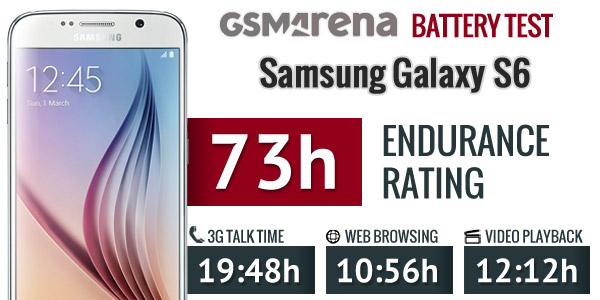 Our testing procedure includes a standby battery endurance test,
which is not shown in the scorecard above, but is a part of the overall
rating. You can learn more about our standardized routine here.
Our testing procedure includes a standby battery endurance test,
which is not shown in the scorecard above, but is a part of the overall
rating. You can learn more about our standardized routine here.Update, April 3: We received a retail unit and re-ran the benchmark. The numbers improved noticeably compared to the initial tests with the pre-production unit.
Connectivity
The Samsung Galaxy S6 is armed to the teeth in connectivity terms. The mandatory 2G/3G/4G LTE is present with Cat. 6 downlinks thanks to Samsung's latest Exynos 7420 chipset. This gives you download speeds of up to 300Mbps, with 50Mbps worth of uploads. If you missed it in the specs section, the Galaxy S6 uses nano-SIM cards.In terms of local connectivity, there's dual-band Wi-Fi a/b/g/n/ac, so you can make the best of your home's Internet connection. DLNA is supported in multimedia apps for sharing content across compatible devices.
Speaking of, the Galaxy S6 makes it easy to share the Wi-Fi hotspot info with nearby devices (detected via Bluetooth) using the Quick Connect feature. This saves you the trouble of typing in the Wi-Fi password.
Bluetooth has been bumped up to version 4.1. There aren't any easily noticeable changes since 4.0 but, among the more important ones, Low Energy mode is now supported for connecting to smart watches and some sport sensors. ANT+ is available for such sensors too, so the Galaxy S6 will happily talk to whatever sports sensor you have.
NFC is on board for quick pairing and sharing and there's an IR blaster for controlling home appliances. Samsung's default app mostly handles your AV setup, but third party apps can be used for a wider range of devices.
The Samsung Galaxy S6 features a microUSB 2.0 port. It's slower at transferring data than the USB 3.0 port used in a few Samsung devices, but it has a standard size plug and it offers Quick Charge 2.0 and MHL 3.0. With the right adapter, you get 2160p@30fps output so you can watch videos you shot with the phone in their full resolution. There's 7.1 surround sound output, if the video player supports it (sadly, the pre-installed one does not).
Finally, there's a GPS/GLONASS/Beidou SatNav receiver on board. GPS alone is enough on its own but GLONASS provides extra precision, especially in dense urban settings as it also uses Russian satellites. Beidou is currently available only in China and neighboring regions, but China is an important market for Samsung so it's a nice thing to have on board.
Samsung Pay is available by default on the Galaxy S6. The new service works with NFC and a newly developed technology called MST - Magnetic Secure Transmission. The MST will allow the Galaxy S6 owners to use their phones on most of the existing terminals and merchants won't need to upgrade their payment solution.
Samsung has acknowledged the mobile wallet adoption is going very slowly and the company has built-in a new solution to this problem inside the Galaxy S6 with the MST tech that requires little to no upgrade from current card readers already installed at retailers.
Samsung Pay has already been certified by Visa and MasterCard. Samsung is teaming up with key financial institutions around the world such as American Express, Bank of America, Citi, JPMorgan Chase, and U.S. Bank, in order to provide more flexible services and coverage.
Samsung Pay is KNOX-secured, which means the Galaxy S6 users should be getting government-grade protection of their personal data.
Conclusion
If you are not sure what to think and how to feel about the Samsung Galaxy S6, you came to the right place. We'll do it for you. Here's the deal. You're free to feel any way you like. Impressed. Upset. Confused? Sounds familiar.
We've come to take it for granted that every new Galaxy S generation will add new features and beef up specs. The Galaxy S6 takes away. It's been encoded in Samsung's DNA to try and beat every spec of any rival. The Galaxy S6 omits the very features that, presumably, kept Samsung at the top.
Is this their way of saying we'll beat you even with one arm tied behind our back? We didn't become the market leader because the competition was stupid enough to not care about memory expansion and removable batteries.
Who knows, they may be this arrogant. Or maybe the Galaxy S6 is trying to say that the S-line can change and still be better than most.
But can it be the best Galaxy S smartphone yet without a memory card slot, removable battery and water-proofing? The best screen and chipset in business might as well help.
Key test findings
- Excellent build quality, premium finish, very good grip, size easily pocketable.
- Best in-class Quad HD Super AMOLED display with the highest pixel-per-inch density to date. Its contrast ratio, viewing angles, and sunlight legibility are all chart-toppers.
- Battery life is above average but turned out noticeably worse than the S5.
- TouchWiz has gotten leaner and more customizable (theme downloads), less features, but also less clutter
- Excellent overall performance, probably the fastest Android smartphone around
- The loudspeaker is average in loudness and quieter than the Galaxy S5
- Excellent multimedia package out of the box
- Solid audio quality
- 16MP main camera is among the best in terms of resolved detail, noise and sharpness, as well as features, but our test charts show that the Galaxy Note 4 is still ever so slightly better
- Video quality is excellent both in 2160p and 1080p resolution, but again, the Galaxy Note 4 video feed is marginally sharper
Samsung has always insisted on the best available hardware for the Galaxy S-line and that's one thing that hopefully will never change. The QHD AMOLED screen and the Exynos 7420 chip are Samsung-made components, the 16MP sensor with optical image stabilization courtesy of Sony.
Wireless charging support right out of the box, LTE Cat.6, a much improved fingerprint scanner and heart-rate monitor round of a proper flagship package. The simplified and polished TouchWiz adds better theming support to the familiar solid multi-tasking features. The Galaxy S6 comes with 32, 64 or 128 GB of the super-fast UFC 2.0 storage and 3GB of new generation LPDDR4 RAM. You will be also getting 115GB of OneDrive storage out of the box, which is great. Other Microsoft goodies are OneNote and Skype.
The bad? Well, no memory expansion and no access to the battery are big no's in our book and that won't change overnight. The lack of water-proofing isn't a deal-breaker, but even if it was, Samsung would kindly point you to the Galaxy S6 Active, which is just around the corner.
Very few real competitors offer a user-replaceable battery. Expandable memory is a different story - probably the biggest risk the Galaxy S6 is undertaking. If that steers more customers to the Note 4 though we don't think Samsung will mind.
The Snapdragon 805-powered Galaxy Note 4 also offers a Quad HD Super AMOLED screen, just bigger. It has the same camera sensor but the old-gen fingerprint scanner. The S-Pen and its dedicated apps are hard to say no to at about €150 less than the expected launch price of the Galaxy S6.
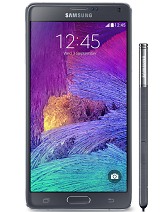
Samsung Galaxy Note 4
That said, the Galaxy S6 Edge is probably the toughest in-house competitor - if you're on an unlimited budget. That curved display makes an already premium phone absolutely unique and we understand those who think it should've been the one and only flagship. Yep, we've seen it and if it doesn't help you get over the missing card slot we don't know what will. It's an extra €150 for the double-edged screen, take it or leave it.
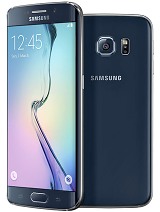
Samsung Galaxy S6 edge
The HTC One M9 is the only flagship by a major manufacturer that debuted right along the Galaxy S6 - and may even beat it to market. It's stuck at a 1080p screen - but the probable upside is faster performance by the S810 chip. It has the familiar all-metal unibody, graced with BoomSound speakers and the camera sounds quite promising on paper. It omits a fingerprint scanner but has expandable memory and costs about the same as the Galaxy S6, which we don't think is doing the M9 any favors.
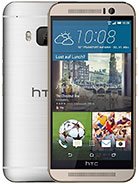
HTC One M9
The LG G Flex2 with its curved P-OLED 1080p display, self-healing rear cover and Snapdragon 810 chip is worth checking out, especially considering it costs less than the Galaxy S6. The unique design is complemented by a capable OIS 13MP camera and although the curved body rules out a removable battery, a microSD card slot is available.
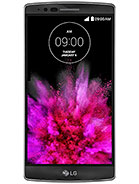
LG G Flex2
Finally, Apple. The most likely rival to push Samsung out of their comfort zone. The one to prove a point to. The one that does not compete for specs and benchmarks - and therefore the one that's hardest to beat. The Galaxy S6 is a couple of generations ahead in the numbers game but clearly learning from Apple in terms of design. So much so that if it wasn't for the Edge, Samsung would've had trouble responding to allegations of copying this time around.
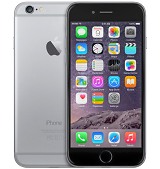

Apple iPhone 6 • Apple iPhone 6 Plus
Anyway, another pair of flagships will make things even more interesting. The Sony Xperia Z4 and the LG G4 will eventually challenge the Samsung Galaxy S6 for the Android top spot. Sounds just like last season. But it's different. It almost looks like Samsung is breaking their own rules just to make it more exciting. Wrong. They darn sure want to win again.
Subscribe to:
Post Comments
(
Atom
)












No comments :
Post a Comment